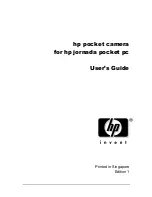
Chapter 3 Preparation
—
Power supply
- 26 -
Charging the battery
The battery is not charged at the time of purchase. Use only after charging sufficiently.
It is recommended that you have one extra battery.
≥
It is recommended to perform charging of the battery in a location with ambient temperature of 10 °C to 30 °C (same for the battery temperature).
≥
Use the supplied AC adaptor. Do not use the AC adaptor of another device.
≥
The supplied AC cable is dedicated for this unit. Do not use with any other device. Also, do not use AC cable from other device on this unit.
≥
The battery is not charged when the power is on.
1
Connect the AC cable to the AC adaptor and the AC outlet.
≥
Insert the plugs as far as they will go.
2
Connect the AC adaptor to the <DC IN 12V> terminal.
≥
As the charging lamp lights up green, charging starts. It will turn off
when the charging is completed.
≥
If the charging lamp flashes, refer to page 10.
≥
The DC plug of the AC adaptor, depending on its angle, may block
your view of the charging lamp. To check the charging lamp status,
adjust the angle of the DC plug.
∫
Connecting to the AC outlet
It is possible to use this unit with power supplied from the AC outlet by turning on the unit with the AC adaptor connected.
Even when you use the AC adaptor for recording images, keep the battery connected.
This allows you to continue the recording even if a power failure occurs or the AC adaptor is unplugged from the AC outlet by accident.
≥
The AC adaptor is in the standby condition when the mains plug is connected. The primary circuit is always “live” as long as the AC adaptor is
connected to an electrical outlet.
@
NOTE
0
Do not use any other AC adaptors except the supplied one.
0
We recommend using Panasonic batteries (
25).
0
If you use other batteries, we cannot guarantee the quality of this product.
0
Do not heat or expose to flame.
0
Do not leave the battery(ies) in a car exposed to direct sunlight for a long period of time with doors and windows closed.
0
Do not expose to low air pressure at high altitudes.
0
Do not expose to extremely low air pressure, as this may result in explosions or leakage of flammable liquids and gases.
















































